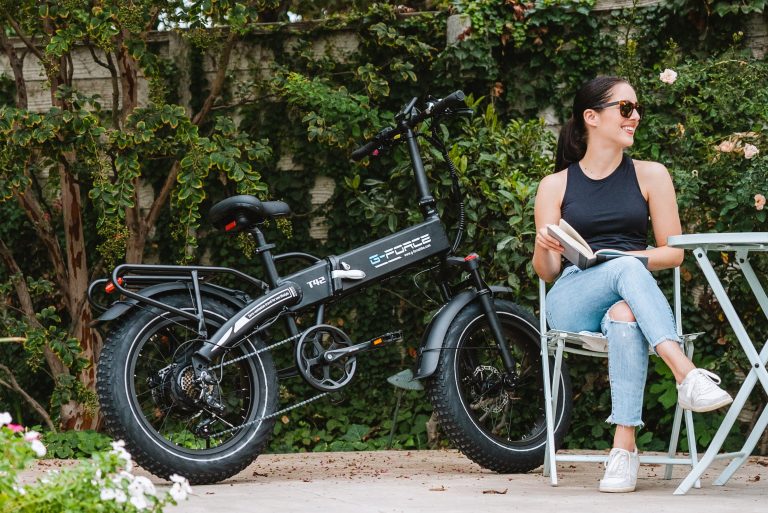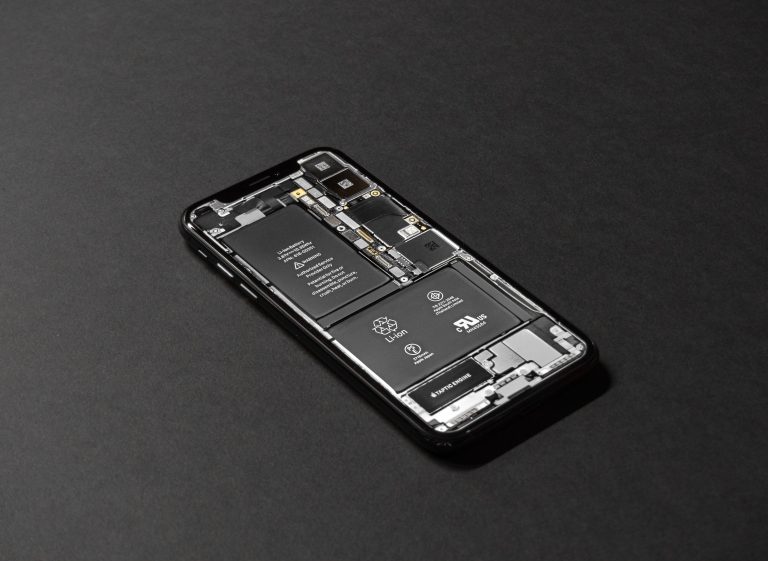How Much Should I Spend On An Ebike?
Thinking about joining the growing community of electric bike enthusiasts? One question that often arises is: how much should I spend on an ebike? With a wide range of options available on the market, it can be overwhelming to determine the right price point for your needs. In this article, we will explore various factors to consider when deciding on the budget for your electric bike, ensuring that you make an informed and cost-effective choice. Whether you’re a casual rider or a dedicated cyclist, this guide will help you find the perfect balance between quality and affordability.

Factors to Consider
When it comes to purchasing an electric bike (ebike), there are several factors you should consider to ensure you make the right choice. These factors include quality and performance, usage and intended purpose, battery and motor, brand reputation, future upgrades and maintenance, as well as accessories and additional features. By carefully considering these factors, you can make an informed decision and find the perfect ebike for your needs.
Quality and Performance
The quality and performance of an ebike are crucial aspects to consider. You want to invest in a bike that is built to last and performs well in various conditions. Look for reputable brands that use high-quality components and materials. Reading customer reviews and seeking recommendations can provide valuable insights into the quality and performance of different ebike models.
Usage and Intended Purpose
Considering your usage and intended purpose is essential when selecting an ebike. Are you planning to use it for daily commuting, leisurely rides, or off-road adventures? Different ebike models cater to specific types of riding, so it’s important to choose one that aligns with your needs. For example, if you plan to use your ebike for commuting in the city, a lightweight and maneuverable model may be ideal. On the other hand, if you enjoy off-roading, a rugged and durable ebike with good suspension would be more suitable.
Battery and Motor
The battery and motor are key components of an ebike that greatly influence its performance and range. Consider the capacity and type of the battery, as well as the power and efficiency of the motor. A higher-capacity battery will provide a longer range, allowing you to travel greater distances without recharging. Additionally, a powerful motor will assist in navigating hilly terrains and provide a smoother riding experience. Research different battery and motor options to find the combination that best suits your needs.
Brand Reputation
Choosing a reputable brand is important when purchasing an ebike. Established brands often have better quality control, more reliable customer support, and a track record of producing durable and efficient ebikes. Look for brands that have been in the industry for a while and have positive customer reviews. While lesser-known brands may offer lower prices, they may not have the same level of quality or customer satisfaction.
Future Upgrades and Maintenance
Considering future upgrades and maintenance is crucial to ensure the longevity and versatility of your ebike. Some ebikes allow for additional accessories and upgrades, such as racks, lights, or a larger capacity battery. If you foresee needing these additions in the future, it is worth choosing an ebike that can accommodate them. Additionally, research the availability and cost of maintenance and repairs for different ebike models. It’s always beneficial to choose an ebike with easily accessible parts and a reputable service center.
Accessories and Additional Features
When choosing an ebike, take into account any accessories and additional features that may enhance your riding experience. These can include built-in lights, fenders, a suspension system, or even a digital display showing battery level and speed. Consider the features that are important to you and make sure the ebike you choose offers them. While these accessories and features may increase the overall cost, they can greatly enhance your riding comfort and convenience.
Budget Ranges
Now that we have explored the various factors to consider when purchasing an ebike, let’s discuss the different budget ranges available. The price of an ebike can vary significantly depending on its specifications, brand, and additional features. To help you determine which budget range suits your needs, we will discuss the entry-level budget, mid-range budget, and high-end budget options.
Entry-level Budget
If you are just getting started with ebikes or have a limited budget, the entry-level budget range is a good place to start. Entry-level ebikes typically range from $500 to $1500. While they may have fewer features and a shorter range compared to higher-end models, they can still provide a reliable and affordable way to experience electric biking. These ebikes are great for shorter commutes or leisure rides on even terrains.
Mid-range Budget
For those seeking a balance between price and performance, the mid-range budget range is worth considering. Mid-range ebikes usually cost between $1500 and $3000. In this price range, you can find ebikes with better components, longer ranges, and additional features. These ebikes are suitable for regular commuters and riders who want more versatility and durability.
High-end Budget
If you are a seasoned rider or prioritize the highest quality and performance, the high-end budget range is ideal for you. High-end ebikes can cost $3000 and above. These ebikes often come with top-of-the-line components, longer ranges, advanced features, and elegant designs. They are perfect for avid cyclists, off-roaders, or those who rely heavily on their ebikes for daily transportation.
Value for Money
Determining the value for money is essential to ensure you get the most out of your ebike purchase. This involves understanding your needs, comparing specifications and features, and seeking recommendations and reviews.
Determining Your Needs
To determine the value for money, start by clearly identifying your needs and priorities with your ebike purchase. Consider factors such as your riding style, the terrain you will be riding on, the distance of your usual rides, and any specific features or accessories you require. By understanding your needs, you can better evaluate whether a particular ebike offers good value for its price.
Comparing Specifications and Features
When comparing different ebike models, it’s essential to thoroughly examine their specifications and features. Pay attention to factors such as battery capacity, motor power, range, frame materials, suspension systems, and any additional features. Compare these specifications against your identified needs to determine which ebike offers the best value based on its features and performance.
Seeking Recommendations and Reviews
To gain further insights into the value for money of different ebike models, seek recommendations and read reviews from other ebike owners. Online forums, social media groups, and dedicated ebike communities can provide valuable feedback and experiences. Consider reaching out to experienced ebike riders who have similar riding styles or needs to get their recommendations. Additionally, read customer reviews on reputable websites to see what others have to say about the value provided by specific ebike models.
Additional Costs
When budgeting for an ebike purchase, it’s important to factor in additional costs that may arise beyond the initial price of the bike. These costs can include insurance, safety gear, and maintenance and repairs.
Insurance
Depending on your location and local regulations, you may need to consider obtaining insurance coverage for your ebike. Insurance can protect you against theft, damage, or accidents. Research different insurance providers and policies to determine the most suitable coverage for your ebike and personal circumstances. The cost of insurance will depend on factors such as the bike’s value, usage, and your insurance history.
Safety Gear
Investing in proper safety gear is crucial when riding an ebike. This includes a well-fitting helmet, reflective clothing, gloves, and lights. Safety gear not only protects you in case of an accident but also improves your visibility on the road. Consider the cost of these safety essentials when budgeting for your ebike purchase.
Maintenance and Repairs
While ebikes are generally low maintenance compared to traditional bicycles, they still require occasional maintenance and repairs. This can include tasks such as tune-ups, battery replacements, brake adjustments, and tire replacements. It is advisable to budget for routine maintenance and consider the potential costs of unexpected repairs. Research the estimated maintenance costs for different ebike models and factor them into your budget to ensure you can keep your ebike in optimal condition.

Financing Options
If you are unable or prefer not to make an outright purchase, there are different financing options available for ebike purchases. These options include outright purchase, retail financing, and store credit.
Outright Purchase
The simplest financing option is an outright purchase, where you pay the full price of the ebike upfront. This option eliminates any debt or interest payments and allows you to own the ebike outright from the start. If you have the means to make an outright purchase, it can be a straightforward and cost-effective financing option.
Retail Financing
Many ebike retailers offer in-house financing options, allowing you to pay for your ebike over a period of time. Retail financing typically involves monthly payments with added interest charges. Before considering retail financing, it is important to compare the interest rates and terms offered by different retailers. Carefully evaluate the total cost of financing to ensure it fits within your budget.
Store Credit
Some ebike retailers may offer store credit options, allowing you to purchase an ebike and pay in installments without interest charges. Store credit options often require a credit check and may have restrictions on the available ebike models. If you qualify and the available ebikes meet your needs, store credit can be a convenient and cost-effective financing option.
Second-Hand or Used Ebikes
If you are looking to save money or prefer a specific model that is no longer available new, buying a second-hand or used ebike can be a viable option. However, there are both pros and cons to consider before making a decision.
Pros of Buying Used
The main advantage of buying a used ebike is the potential cost savings. Used ebikes are typically priced lower than their new counterparts, allowing you to get more bang for your buck. Additionally, buying used may allow you to find a specific model or brand that is no longer in production or is hard to find new. Buying used also gives you the opportunity to inspect and test the bike before making a purchase, ensuring you get exactly what you are looking for.
Cons of Buying Used
One of the main drawbacks of buying a used ebike is the uncertainty regarding its condition and history. While reputable sellers will provide as much information as possible, there may still be unknown factors that could affect the bike’s performance or longevity. Components may be worn or nearing the end of their lifespan, leading to potential maintenance and repair costs in the near future. Additionally, used ebikes may not come with warranties, reducing your recourse if any issues arise.
Ensuring Quality and Performance
To ensure the quality and performance of a used ebike, there are several steps you can take. First, thoroughly inspect the bike for any visible signs of damage or wear. Pay close attention to the battery, motor, brakes, and frame. Test ride the bike to evaluate its performance, including acceleration, braking, and handling. If possible, ask for maintenance records or any documentation that provides insight into the bike’s history. Finally, consider having a knowledgeable mechanic inspect the ebike before finalizing the purchase to identify any potential issues.

Conclusion
When it comes to purchasing an ebike, determining how much to spend requires careful consideration of various factors. Factors such as quality and performance, usage and intended purpose, battery and motor, brand reputation, future upgrades and maintenance, and accessories and additional features all play a role in finding the right ebike for your needs. Additionally, budget ranges, value for money, additional costs, financing options, and the pros and cons of buying used should all be taken into account before making a final decision. By following these guidelines and conducting thorough research, you can confidently invest in an ebike that will provide you with many enjoyable rides for years to come.







